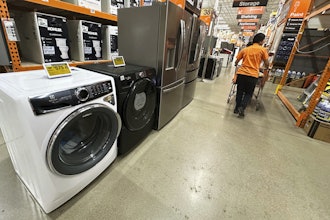There are many costly supply chain mistakes that business people may not even realize they are making. Here are three of the biggest mistakes that businesses, large and small, often find themselves making and how you can avoid the risks altogether.
No. 1 - Failing to Find the Right Balance in Your Inventory Levels
How many times do you find yourself running out of a popular item while other low-selling parts and products sit idly on the shelves taking up space? This is the result of an inventory imbalance. To find the right balance in your inventory levels, you must look at your inventory items in a mathematical way and perform a number of calculations to make sure you are consistently ordering the right number of items to keep your inventory well-stocked but not overstuffed.
There are four main metrics that will help you find the right balance of inventory quantities to keep in stock. These are:
- Days of Supply
- Inventory Turnover Ratio
- Reorder Point
- Economic Order Quantity
Days of Supply
This metric shows you how many days’ worth of a certain item that you currently have in your warehouse. Here is the equation that you can use to calculate the Days of Supply:
Inventory On Hand / Average Daily Usage and/or Sales
You can calculate the Days of Supply of every single item in your warehouse because there is no one-size-fits-all answer. This metric is specific to each item and it can’t be broadly applied.
Inventory Turnover Ratio
The Inventory Turnover Ratio is the number of times that you sell every item in your inventory over the course of a year. The equation for this metric is as follows:
Annual Cost of Goods Sold / Average Cost of Inventory on Hand During the Year
Most of the time, a high Inventory Turnover Ratio is better than a low one. But what constitutes a high or low ratio depends on the industry you are in. Grocery stores may have an Inventory Turnover Ratio that is over 100 owing to the fact that they sell so many perishable items that must be sold in a few days while an electronics store may have one around 10 because of the nature of the products they are selling, which are more expensive and less prone to spoilage. Both of these could be considered perfectly healthy ratios. The point is, you don’t want to have too much or too little inventory on hand, and this is a good way of seeing how you’re doing and if there is room for improvement.
Reorder Point
The Reorder Point tells you the inventory quantity, which (once reached) signals that it is time to order more of a certain item to avoid running out of it. This is how you calculate the Reorder Point:
(Lead Time in Days + Safety Stock in Days + Basic Stock in Days) x Unit Sales Per Day
You can use a Reorder Point calculator to help you quickly generate the reorder point of each item you want to reorder to keep your inventory in balance.
Economic Order Quantity
The Economic Order Quantity is the most economical quantity of an item that should be reordered each time it becomes necessary to obtain more. The formula for the Economic Order Quantity is a little complicated, but here we go:
√ ((Annual Demand in Units x Cost Per Order) x 2)
Annual Carrying Cost Per Unit
You start by multiplying the Annual Demand in Units and the Cost Per Order together and then multiplying that number by 2. Then divide that total by the Annual Carrying Cost Per Unit and, finally, take the square root of the result. This will help you avoid ordering too many or too few of an item, and it will also help you tamp down on carrying costs and get a good deal from the carrier and vendor.
No. 2 - Not Having a Backup Plan When Things Go Wrong
When things go wrong, your supply chain management is really put to the test. If you assume that deliveries will always be on time and there will never be inclement weather, natural disasters, company closures, or other problems that disrupt the regular flow of goods, it will be quite painful and stressful to deal with them when they happen.
Don’t chain yourself to a single vendor. Have multiple vendors to choose from. Keep an eye on each vendor’s performance over time and see if you might be able to get a better deal if you explore your options and look into other vendors. Perhaps you could even set up ecommerce accounts to drop ship items if you run into serious situations that cut you off from your vendors at critical times. There are always options.
No. 3 - Never Looking for Ways to Improve
You shouldn’t assume that the way you’re doing things today will always be the best way. Economic conditions change, technology improves, and it’s important to adapt. Of course, you shouldn’t assume you’re doing everything wrong either. The ideal attitude is somewhere in the middle in the realm of healthy skepticism.
Study trends in your sales, ordering patterns, and inventory levels. You may be surprised at what you find. Perhaps there are seasonal fluctuations in your sales that would make it better to order more of certain items at one time of the year and then stock up on other items at another time. You may also be able to use inventory data to find products that are often sold together, which may help you restructure your warehouse to make the receiving and picking processes faster by storing those items next to each other on the shelf.
Also, it’s okay to ask your vendors for more favorable payment terms and discounts, especially if you have been a loyal customer. If you have cultivated a strong relationship with a vendor, they may be willing to negotiate with you and come to a mutually beneficial compromise.
Robert Lockard is a copywriter for Fishbowl Inventory.























